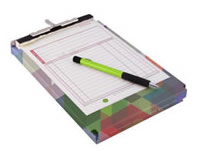This training course will guide you through the principles of safe prescribing and demonstrate how to complete the National Standard Medication Charts correctly.
This new course includes use of both the National Inpatient Medication Charts (NIMC) and PBS Hospital Medication Charts (PBS HMC), and is compatible for use on tablet devices.
View the learning outcomes.

Target audience: Medical, nursing and pharmacy staff working in a hospital setting. Medical, nursing and pharmacy students looking towards hospital practice.
Open to: All health professionals and students
Cost: Free
CPD: It is recommended that 3 CPD hours be recorded for the purposes of self-directed CPD.
The 2026 enrolment version will be available from 1 January 2026.
2025 enrolments will close 31 December 2025.
Learning outcomes
Click on the module title below to access the learning outcomes.
Module 1: Patient identification, adverse drug reactions and best possible medication history
Upon completion of this activity you should be able to:
- Identify and document required information for patient identification
- Document patient allergies and adverse drug reactions
- Describe what information a best possible medication history should contain
- Document medicines taken before presentation to hospital
Module 2: Optimising the use of the National Standard Medication Charts
Upon completion of this activity you should be able to:
- Demonstrate your understanding of the safety features of the National Standard Medication Charts and how these reduce risk of medication errors.
- Identify the different sections of the NSMC, including regular medicines, variable dose medicines, PRN medicines, once-only medicines and telephone orders
- Describe your role in ensuring clear documentation and communication of medicines related information when using the NSMC
Module 3: VTE prophylaxis and anticoagulation
Upon completion of this activity you should be able to:
- Identify VTE as a national safety and quality priority
- Document your patient’s VTE risk assessment
- Demonstrate understanding of safe and correct use of VTE pharmacological and mechanical prophylaxis
- Demonstrate understanding of the safe and correct use of warfarin
- Demonstrate understanding of safe and correct prescription of oral anticoagulants other than warfarin
Module 4: Medication safety at transitions of care
Upon completion of this activity you should be able to:
- Indicate the reasons for medication reconciliation at transitions of care
- Determine the steps involved in preparing a patient for discharge
- Determine all information required to prescribe, supply, review, or claim for discharge medicines
Special Features of the Paediatric NIMC
Upon completion of this activity you should be able to:
- Demonstrate your understanding of the unique medication safety issues related to paediatric patients
- Identify safety features unique to the Paediatric NIMC
- Demonstrate use of the safety features of the Paediatric NI
- Calculate the dose of a medicine for a paediatric patient and document correctly on the Paediatric NIMC
Previous enrolments
Go to your Dashboard to access previous copies of this course if:
- you partially completed the course and wish to finish it without starting from scratch.
- you completed the course previously and need to reprint your Certificate of Completion.